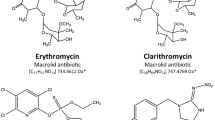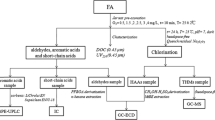Abstract
N-chloro-2,2-dichloroacetamide (N-Cl-DCAM) is an emerging nitrogenous disinfection by-product (N-DBP) which can occur in drinking water. In this study, an analytical method based on liquid chromatography with tandem mass spectrometry (LC-MS/MS) was developed to validate the concentration of N-Cl-DCAM, which was found to be 1.5 µg/L in the effluent of a waterworks receiving raw water from Taihu Lake, China. The changes of N-Cl-DCAM formation potential (N-Cl-DCAMFP) in the drinking water treatment process and the removal efficiency of its precursors in each unit were evaluated. Non-polar organics accounted for the majority of N-Cl-DCAM precursors, accounting for 70% of the N-Cl-DCAM FP. The effect of conventional water treatment processes on the removal of N-Cl-DCAM precursors was found to be unsatisfactory due to their poor performance in the removal of low molecular weight (MW) or non-polar organics. In the ozonation integrated with biological activated carbon (O3-BAC) process, the ozonation had little influence on the decrease of N-Cl-DCAM FP. The removal efficiency of precursors by a new BAC filter, in which the granular activated carbon (GAC) had only been used for four months was higher than that achieved by an old BAC filter in which the GAC had been used for two years. The different removal efficiencies of precursors were mainly due to the different adsorption capacities of GAC for individual precursors. Low MW or non-polar organics were predominantly removed by GAC, rather than biodegradation by microorganisms attached to GAC particles.

Similar content being viewed by others
References
Bei E, Li X, Wu F, Li S, He X, Wang Y, Qiu Y, Wang Y, Wang C, Wang J, Zhang X, Chen C (2020). Formation of N-nitrosodimethylamine precursors through the microbiological metabolism of nitrogenous substrates in water. Water Research, 183: 116055
Bolotin A, Gillis A, Sanchis V, Nielsen-Leroux C, Mahillon J, Lereclus D, Sorokin A (2017). Comparative genomics of extrachromosomal elements in Bacillus thuringiensis subsp. israelensis. Research in Microbiology, 168(4): 331–344
Bond T, Templeton M R, Graham N (2012). Precursors of nitrogenous disinfection by-products in drinking water: A critical review and analysis. Journal of Hazardous Materials, 235–236: 1–16
Bond T, Templeton M R, Mokhtar Kamal N H, Graham N, Kanda R (2015). Nitrogenous disinfection byproducts in English drinking water supply systems: Occurrence, bromine substitution and correlation analysis. Water Research, 85: 85–94
Chen C, Leavey S, Krasner S W, (Mel) Suffet I H (2014). Applying polarity rapid assessment method and ultrafiltration to characterize NDMA precursors in wastewater effluents. Water Research, 57: 115–126
Chow A T, Lee S T, O’Geen A T, Orozco T, Beaudette D, Wong P K, Hernes P J, Tate K W, Dahlgren R A (2009). Litter contributions to dissolved organic matter and disinfection byproduct precursors in California Oak Woodland Watersheds. Journal of Environmental Quality, 38(6): 2334–2343
Chu W, Ding S, Bond T, Gao N, Yin D, Xu B, Cao Z (2016). Zero valent iron produces dichloroacetamide from chloramphenicol antibiotics in the absence of chlorine and chloramines. Water Research, 104: 254–261
Chu W, Gao N, Yin D, Deng Y, Templeton M R (2012a). Ozone-biological activated carbon integrated treatment for removal of precursors of halogenated nitrogenous disinfection by-products. Chemosphere, 86(11): 1087–1091
Chu W, Gao N, Yin D, Krasner S W, Templeton M R (2012b). Trace determination of 13 haloacetamides in drinking water using liquid chromatography triple quadrupole mass spectrometry with atmospheric pressure chemical ionization. Journal of Chromatography. A, 1235: 178–181
Chu W H, Gao N Y, Deng Y, Dong B Z (2009). Formation of chloroform during chlorination of alanine in drinking water. Chemosphere, 77(10): 1346–1351
Chuang Y H, Mitch W A (2017). Effect of ozonation and biological activated carbon treatment of wastewater effluents on formation of N-nitrosamines and halogenated disinfection byproducts. Environmental Science & Technology, 51(4): 2329–2338
Compton O C, Jain B, Dikin D A, Abouimrane A, Amine K, Nguyen S B T (2011). Chemically active reduced graphene oxide with tunable C/O ratios. ACS Nano, 5(6): 4380–4391
Dotson A, Westerhoff P, Krasner S W (2009). Nitrogen enriched dissolved organic matter (DOM) isolates and their affinity to form emerging disinfection by-products. Water Science and Technology, 60(1): 135–143
Du J, Yang J E, Singh H, Akter S, Won K, Yin C S, Jin F X, Yi T H (2015). Hydrogenophaga luteola sp. Nov. isolated from reed pond water. Antonie Van Leeuwenhoek: Journal of Microbiology and Serology, 108(3): 695–701
Ge F, Zhou L Y, Wang Y, Ma Y, Zhai S, Liu Z H, Dai Y J, Yuan S (2014). Hydrolysis of the neonicotinoid insecticide thiacloprid by the N-2-fixing bacterium Ensifer meliloti CGMCC 7333. International Biodeterioration & Biodegradation, 93: 10–17
Gerrity D, Gamage S, Holady J C, Mawhinney D B, Quinones O, Trenholm R A, Snyder S A (2011). Pilot-scale evaluation of ozone and biological activated carbon for trace organic contaminant mitigation and disinfection. Water Research, 45(5): 2155–2165
Goslan E H, Krasner S W, Bower M, Rocks S A, Holmes P, Levy L S, Parsons S A (2009). A comparison ofdisinfection by-products found in chlorinated and chloraminated drinking waters in Scotland. Water Research, 43(18): 4698–4706
Karnik B S, Davies S H, Baumann M J, Masten S J (2005). The effects of combined ozonation and filtration on disinfection by-product formation. Water Research, 39(13): 2839–2850
Kim H C, Yu M J (2005). Characterization of natural organic matter in conventional water treatment processes for selection of treatment processes focused on DBPs control. Water Research, 39(19): 4779–4789
Kimura S Y, Komaki Y, Plewa M J, Marinas B J (2015). Chloroacetonitrile and N,2-dichloroacetamide formation from the reaction of chloroacetaldehyde and monochloramine in water. Environmental Science & Technology, 47: 12382–12390
Krasner S W, Weinberg H S, Richardson S D, Pastor S J, Chinn R, Sclimenti M J, Onstad G D, Thruston A D (2006). Occurrence of a new generation of disinfection byproducts in waters exhibiting high-precursor loadings. Environmental Science & Technology, 40(23): 7175–7185
Leenheer J A (1981). Comprehensive approach to preparative isolation and fractionation of dissolved organic carbon from natural waters and wastewaters. Environmental Science & Technology, 15(5): 578–587
Liao X B, Bei E, Li S X, Ouyang Y Y, Wang J, Chen C, Zhang X, Krasner S W, Suffet I H M (2015). Applying the polarity rapid assessment method to characterize nitrosamine precursors and to understand their removal by drinking water treatment processes. Water Research, 87: 292–298
Liew D, Linge K L, Joll C A (2016). Formation of nitrogenous disinfection by-products in 10 chlorinated and chloraminated drinking water supply systems. Environmental Monitoring and Assessment, 188(9): 518–533
Lin T, Zhou D, Yu S, Chen W (2016). The removal process of 2,2-dichloroacetamide (DCAcAm): A new disinfection by-product, in drinking water treatment process and its toxicity on Zebrafish. Chemosphere, 159: 403–411
Muellner M G, Wagner E D, McCalla K, Richardson S D, Woo Y T, Plewa M J (2007). Haloacetonitriles vs. regulated haloacetic acids: Are nitrogen-containing DBPs more toxic? Environmental Science & Technology, 41(2): 645–651
Nishijima W, Speitel G Jr (2004). Fate of biodegradable dissolved organic carbon produced by ozonation on biological activated carbon. Chemosphere, 56(2): 113–119
Plewa M J, Muellner M G, Richardson S D, Fasano F, Buettner K M, Woo Y T, McKague A B, Wagner E D (2008). Occurrence, synthesis, and mammalian cell cytotoxicity and genotoxicity ofhaloacetamides: An emerging class of nitrogenous drinking water disinfection byproducts. Environmental Science & Technology, 42(3): 955–961
Ratpukdi T, Siripattanakul S, Khan E (2010). Mineralization and biodegradability enhancement of natural organic matter by ozone-VUV in comparison with ozone, VUV, ozone-UV, and UV: Effects of pH and ozone dose. Water Research, 44(11): 3531–3543
Rosario-Ortiz F L, Snyder S, Suffet I H (2007). Characterization of the polarity of natural organic matter under ambient conditions by the polarity rapid assessment method (PRAM). Environmental Science & Technology, 41: 4895
Schideman L C, Snoeyink V L, Mariñas B J, Ding L, Campos C (2007). Application of a three-component competitive adsorption model to evaluate and optimize granular activated carbon systems. Water Research, 41(15): 3289–3298
Simpson D R (2008). Biofilm processes in biologically active carbon water purification. Water Research, 42(12): 2839–2848
Tan Y, Lin T, Jiang F, Dong J, Chen W, Zhou D (2017). The shadow of dichloroacetonitrile (DCAN), a typical nitrogenous disinfection by-product (N-DBP), in the waterworks and its backwash water reuse. Chemosphere, 181: 569–578
Tang H L, Chen Y C, Regan J M, Xie Y F (2012). Disinfection by-product formation potentials in wastewater effluents and their reductions in a wastewater treatment plant. Journal of Environmental Monitoring, 14(6): 1515–1522
Tang H L, Xie Y F (2016). Biologically active carbon filtration for haloacetic acid removal from swimming pool water. Science of the Total Environment, 541: 58
Urfer D, Huck P M (2001). Measurement of biomass activity in drinking water biofilters using a respirometric method. Water Research, 35(6): 1469–1477
Vargas-Albores F, Porchas-Cornejo M A, Martinez-Porchas M, Villalpando-Canchola E, Gollas-Galvan T, Martinez-Cordova L R (2017). Bacterial biota of shrimp intestine is significantly modified by the use of a probiotic mixture: A high throughput sequencing approach. Helgoland Marine Research, 71(1): 5–14
Velten S, Boller M, Köster O, Helbing J, Weilenmann H U, Hammes F (2011). Development of biomass in a drinking water granular active carbon (GAC) filter. Water Research, 45(19): 6347–6354
von Gunten U (2003). Ozonation of drinking water: Part I. Oxidation kinetics and product formation. Water Research, 37(7): 1443–1467
Wagner E D, Hsu K M, Lagunas A, Mitch W A, Plewa M J (2012). Comparative genotoxicity of nitrosamine drinking water disinfection byproducts in Salmonella and mammalian cells. Mutation Research/Genetic Toxicology and Environmental Mutagenesis, 741(1–2): 109–115
Wang S, Lin T, Chen W, Chen H (2017). Optimization of the precursor removal of dichloroacetonitrile (DCAN), an emerging nitrogenous disinfection by-product, in an up-flow BAC filter. Chemosphere, 189: 309–318
Yu Y, Reckhow D A (2017). The formation and occurrence of N-chloro-2,2-dichloroacetamide, a previously overlooked nitrogenous disinfection byproduct in chlorinated drinking waters. Environmental Science & Technology, 51(3): 1488–1497
Zheng J, Lin T, Chen W (2018). Removal of the precursors of N-nitrosodiethylamine (NDEA), an emerging disinfection byproduct, in drinking water treatment process and its toxicity to adult Zebrafish (Danio rerio). Chemosphere, 191: 1028–1037
Acknowledgements
Financial support was received from the National Natural Science Foundation of China (Grant No. 51978238), the Science and Technology Development Plans of Ministry of Housing and Urban-Rural Development (2020-K-036), the Six Talent Peaks Project in Jiangsu Province (JNHB-004), and a project funded by the Priority Academic Program Development of Jiangsu Higher Education Institutions.
Author information
Authors and Affiliations
Corresponding author
Additional information
Highlights
• N-Cl-DCAM, an emerging N-DBP in drinking water was investigated.
• A new BAC has a better removal efficiency for N-Cl-DCAM precursors than an old BAC.
• N-Cl-DCAM precursors are more of low molecular weight and non-polar.
• Adsorption of GAC plays a major role in removal of N-Cl-DCAM precursors by an O3-BAC.
Rights and permissions
About this article
Cite this article
Ge, M., Lin, T., Zhou, K. et al. Characteristics and removal mechanism of the precursors of N-chloro-2,2-dichloroacetamide in a drinking water treatment process at Taihu Lake. Front. Environ. Sci. Eng. 15, 93 (2021). https://doi.org/10.1007/s11783-020-1338-6
Received:
Revised:
Accepted:
Published:
DOI: https://doi.org/10.1007/s11783-020-1338-6




